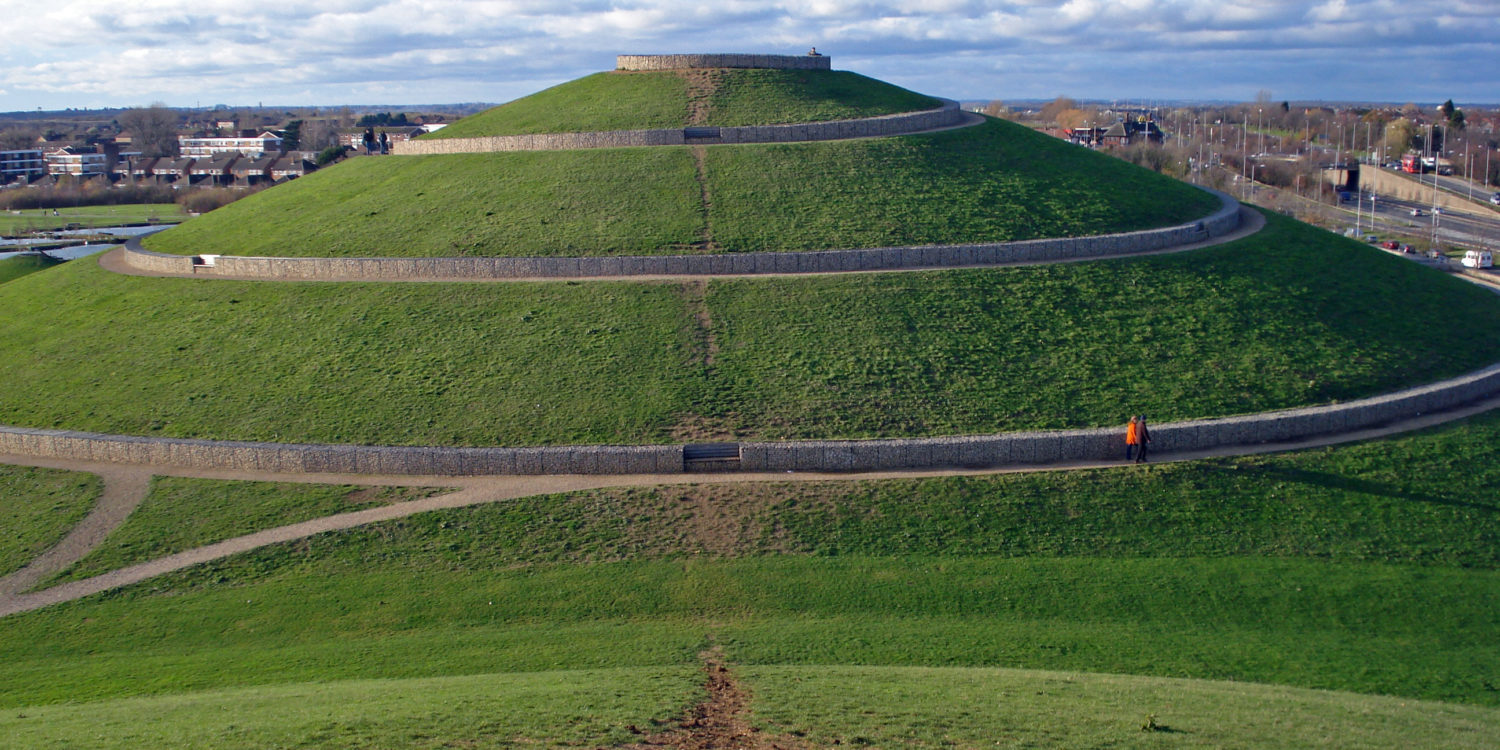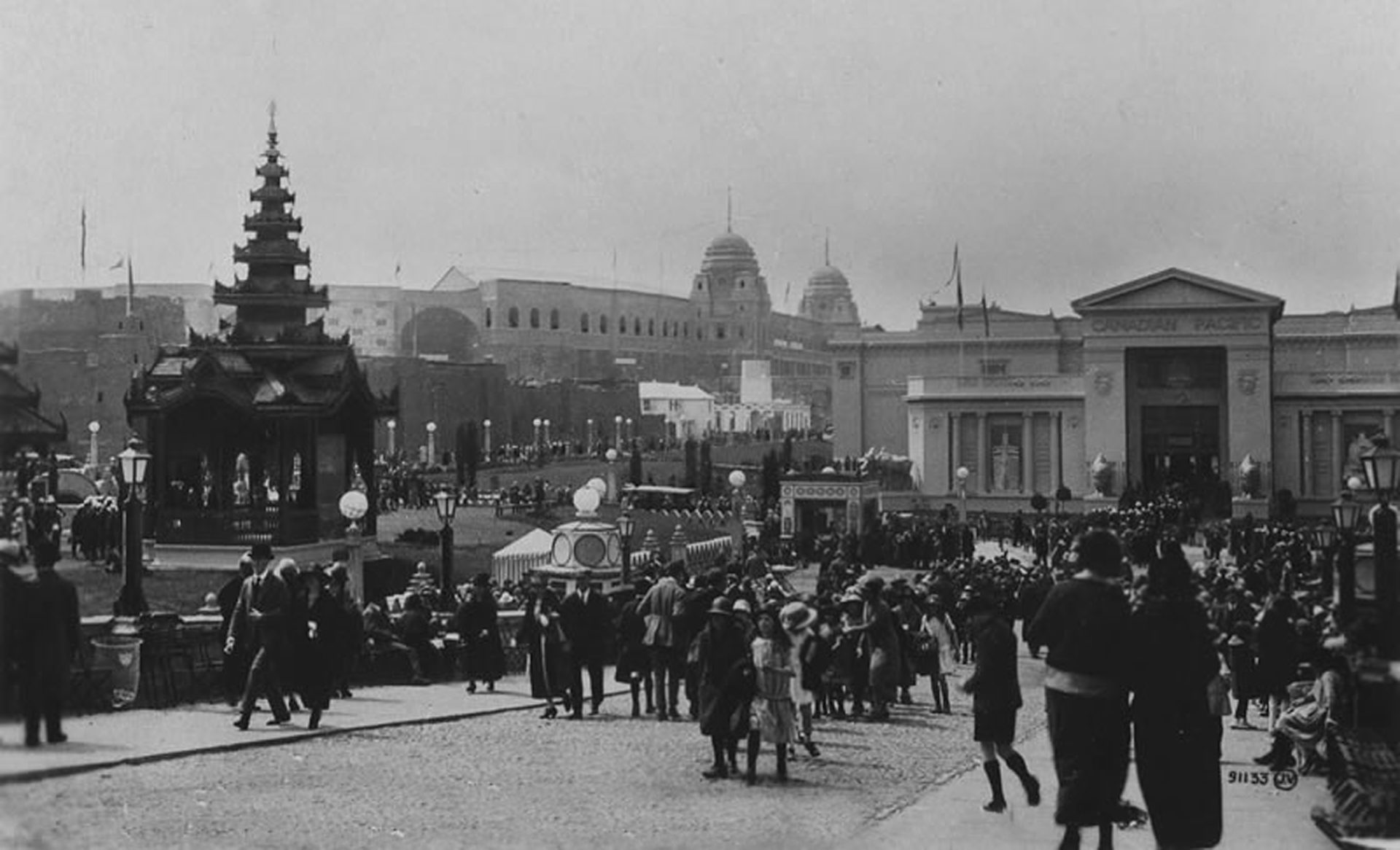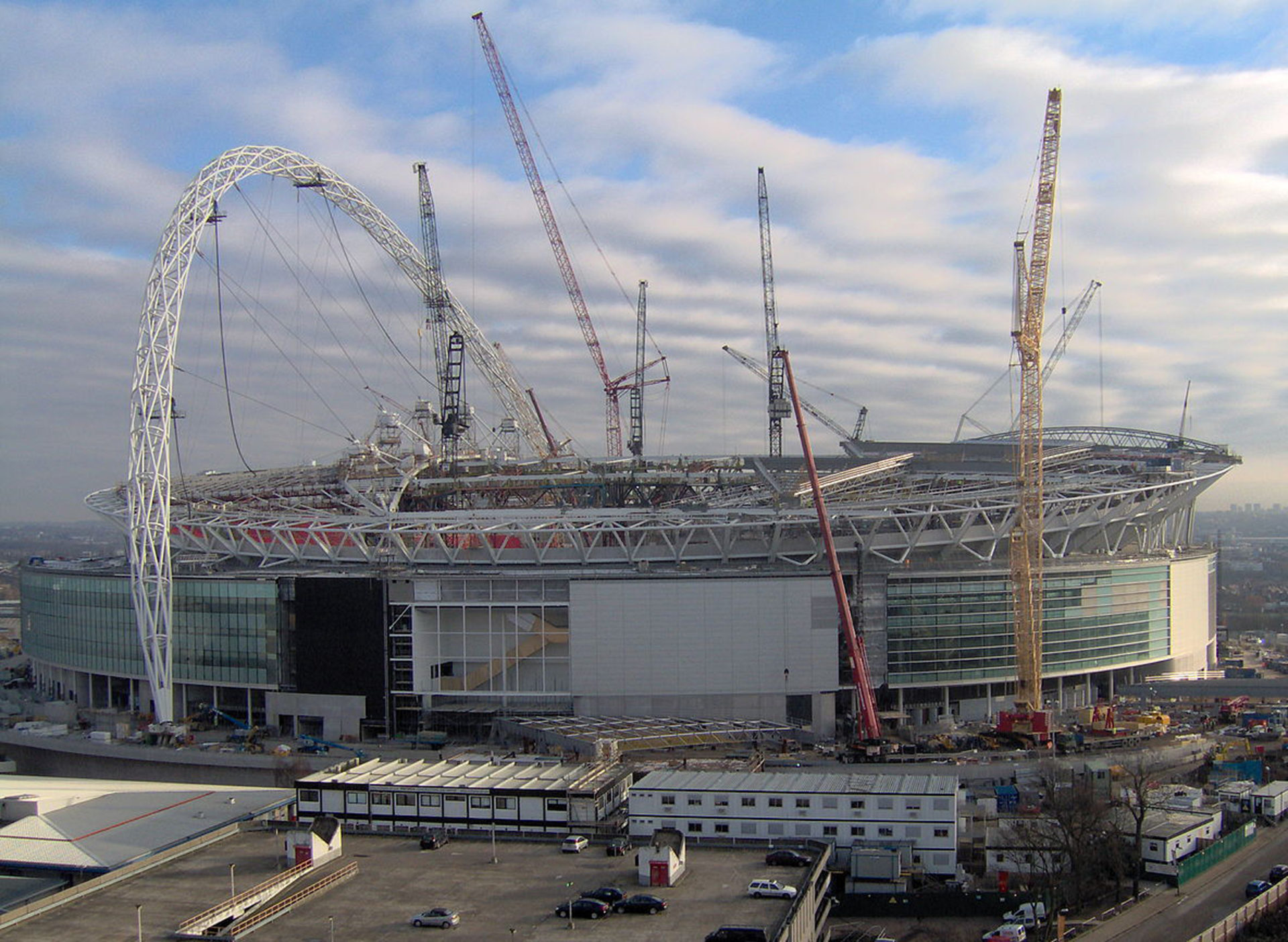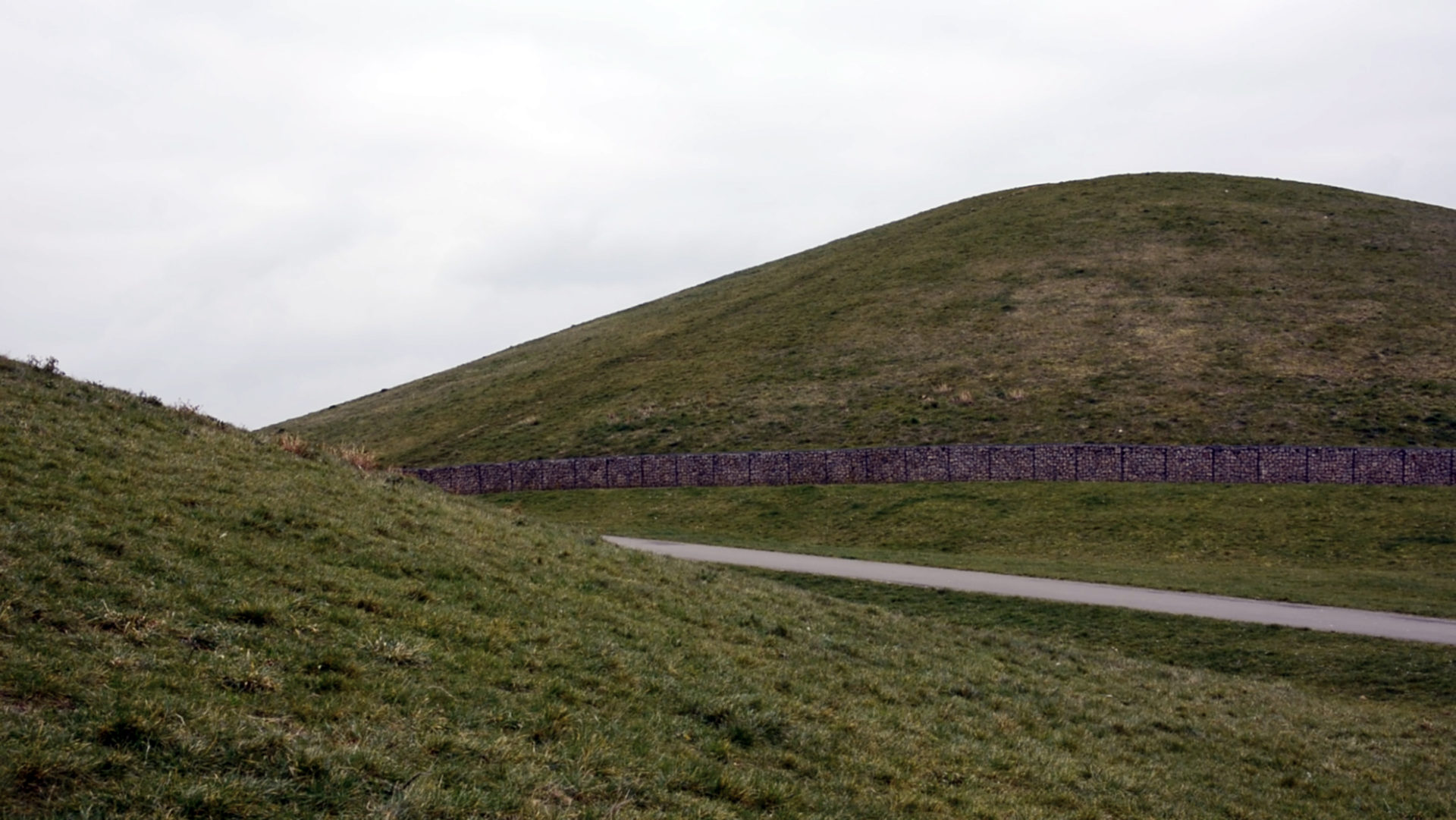At the opening of the European Parliament in July 2019, Brexit Party MEP Ann Widdecombe connected the British struggle to leave the EU with “oppressed people turning on their oppressors” and “colonies against their empires”. This misplaced underdog mentality is reflective of a particular strain of British (and specifically English) self-identity forged in a century marked by imperial decline, and exacerbated by the past decade of self-imposed austerity. In order to understand this strand of thinking, few monuments stand out more than the now-demolished Twin Towers at Wembley Stadium.
Colloquially known as the “Home of Football”, the old Wembley Stadium had a unique place not only in British cultural life, but also across the global footballing community. However, after years of debate, the stadium along with its Twin Towers were demolished in 2003 to make way for a modernised stadium designed by Norman Foster. This happened despite the stadium being on Historic England’s Grade II list of buildings (i.e. buildings “of special interest, warranting every effort to preserve [them]”) and the fact that it meant the erasure of a genuine icon of 20th Century British cultural life. While this moment upset football fans globally, Wembley’s demolition and the subsequent burial of its remains within a series of artificial mounds at the nearby Northala Fields, also raise concerning questions about the country’s relationship to its imperial past.

British Empire Exhibition, Wembley 1924-1925
Jenny Scott/Flickr
The stadium was initially named the Empire Stadium, and was intended as the central form within the British Empire Exhibition of 1924, with the Twin Towers strategically placed as a beacon on the main axis of the exhibition park. Designed in a pseudo-Moghul style, the towers were clearly meant to celebrate the British Empire’s dominion over India. The so-called “jewel in the imperial crown” had been formally colonised following the brutal suppression of the Indian Mutiny, after which the British Empire presided over two devastating famines which claimed the lives of as many as 30 million people.
However, these imperial beginnings were somehow forgotten long before the stadium’s ultimate demolition, leaving only the nostalgia of the Twin Towers and their connection to the England National Team’s 1966 World Cup victory. Their newfound symbolism found its place in popular culture, embracing its status in footballing folklore while obscuring the cultural appropriation, British exceptionalism, and historical amnesia expressed by this quintessentially British symbol. The prominence of the Twin Towers succinctly encapsulates a particular strain of British self-identity that is still coming to terms with its global position decades after the fall of the British Empire.
While the 1920s may have been the moment in which Britain’s Empire was at its zenith, the British Empire Exhibition of 1924 emerged at a time of imperial unease. The Anglo-Irish Treaty was signed in 1921, which led to the formation of the Irish Free State as a nation independent from the United Kingdom. Further from home, tensions in India peaked with the Malabar Riot in 1921, which coincided with the period of ‘non-cooperation’ with British rule led by Mahatma Gandhi, who was imprisoned in 1922. Britain’s colonial subjects had emerged from the First World War with a new found desire for national independence. At home and abroad, it appears that this was the beginning of the end of the British Empire, with its power particularly in question after the separation of Ireland. Against this political backdrop, the British Empire Exhibition was therefore a reassertion of Britain’s power on the world stage, an attempt to appear strong in testing times, as well as to stimulate trade and bonds within the Empire.
The exhibition itself was the first of only two attempts to distil Britain’s imperial achievements into one, easily digestible playground. Its cultural significance across Britain was strong. Most people in the country were likely to be aware that the event was taking place and an incredible 27 million people visited in 1924 alone. The scale and curatorial style of the exhibition made it a propaganda tool to extend knowledge of the Empire to the working classes unable to travel the globe. Much like the Festival of Britain in 1951, described as a ‘Tonic to the Nation’ in the traumatic years immediately following the Second World War, this was an event to distract the British working classes from the issues Britain was facing in its newly precarious global position.
While the scale of what was being depicted was undoubtedly impressive, the contrast between the “Western” pavilions and the “Eastern” pavilions was vast. The exhibition depicted the west as cool and logical, while the east was shown to be irrational and exotic. Within the Palace of Engineering, a trade show of endless British companies used the opportunity to show off their immaculate new machinery, and display their technological and scientific triumphs (neatly eliding the fact that Britain was already lagging way behind its industrialised competitors, particularly Germany and the United States).
Meanwhile in the West African Pavilion, indigenous people were on display, making and playing traditional instruments in a performance that attracted visitors to the exotic spectacles of a foreign land. This performative aspect to the exhibition, combined with the aim of the exhibitors to teach the British working classes about the achievements of the Empire, effectively created a series of human zoos, which invited the British public to study the work of the indigenous people scientifically. In this way, the exhibition sat comfortably within the British elite’s long tradition of divide and rule. Here, Britain’s working class subjects were brought on board with the British Empire’s mission by being situated above the exotic ‘other’.
Conversely, the design of the Twin Towers on the surface appeared to be an interesting product of colonial hybridity, with two Moghul-inspired domes placed on top of symmetrical and turreted towers featuring porthole windows on each side. Through the use of stucco, these contrasting styles were unified into an abstract form, in a bid to express Britain’s global influence. However, given the rising tensions in Anglo-Indian relations in the 1920s, the integration of Moghul design into a stuccoed British symbol was meant more than anything to reassure the British public of its global position and conceal the rising desire for Indian independence. As with the exhibition itself, the design of the Twin Towers physically embodied the imperial anxiety of 1920s Britain, providing a front to maintain an British sense of decorum at a time of imperial unease.
In the years following Wembley’s colonial beginnings, as more FA Cup Finals and England matches were played there, its importance as a purely footballing destination grew. This layering of footballing history since the British Empire Exhibition has muddied the memory and symbolism of the Twin Towers, and initiated a process of historical amnesia regarding their imperial conception. The most iconic and important moment since the exhibition was the 1966 World Cup, the only time England has hosted the World Cup, and the only time its national team has gone on to win it. When the stadium was demolished, the only part that the public wanted to keep were the Grade II listed Twin Towers. Sir Bobby Charlton, a key player in that 1966 team, said the towers “represent the country that gave the world the game”, thereby ascribing divine importance to the site for England in particular, but also for the whole footballing world.
This association of the towers with football history, and particularly the 1966 World Cup win, has had the effect of obscuring the imperial symbolism of the stadium. Fans of the national team still commemorate the win with the song, “Two World Wars and One World Cup”, tying together these events into a narrative of global dominance and superiority over their opponents in the final: the (West) Germans. The fact that the National Team has never made it to a World Cup final since then only heightens the mythology surrounding this miraculous moment. England was by no means an out and out favourite to win the tournament before it began, marking the victory with a typically British underdog spirit similarly encapsulated in the country’s retreat at the Battle of Dunkirk during the Second World War. As a symbol, the Twin Towers came to embody these new ideas of British exceptionalism and doggedness, over their previous imperial symbolism.
Certain fans, however, have taken these ideas of exceptionalism further with some of the songs they sing at Wembley, expressing a brutal pedagogy of British dominance that is rarely seen today in other public spaces. In particular, the words “Britons never, never, never shall be slaves” in “Rule Britannia” are an ominous precursor to the post-colonial anxieties of a potential “Great” Britain outside of the European Union. Even though these anxieties may appear to affect a minority of specifically English people, Ann Widdicombe’s speech at the European Parliament show that this has recently become the attitude of a significant minority.
By contrast, while the demolition of the Twin Towers may have been a contentious issue, it was at least a bold, forward-thinking move to say that the Twin Towers did not fit within a progressive image of Britain. That being said, the Norman Foster design that has now replaced the towers is somewhat less progressive, embracing a dated rehash of high-tech architecture through its 133m tall steel arch. This was supposed to be a bold statement for England and its football team in the years since the World Cup win, replacing the Twin Towers with a new progressive symbol of English identity. However, the high-rise developments that surround the Foster design instead represent the former exhibition park as a symbol of a nation subject to the whim of global property speculators. Meanwhile, the stadium itself continually suffers from low capacities due to exorbitant ticket prices for even minor matches, dampening the initial hopes for the new Wembley to become a home for inclusive Britishness.
The remains of the Twin Towers have been on an even more curious journey since the demolition. About two hours’ walk from the stadium site, four artificial mounds emerge from the otherwise relatively flat landscape of Northala Fields, a park which opened to the public in 2008. Inside them, mostly unknown to the general public, is the rubble from the old stadium. The mounds were designed to be an acoustic barrier between the park and the adjacent motorway, creating a pleasant and popular public amenity. However, these oddly primitive forms unfortunately resemble Anglo-Saxon burial mounds, with the use of the Wembley rubble little explained to visitors of the park. This typically British mistake has had the effect of unintentionally but quite conveniently brushing Wembley’s imperial memories under the carpet.
As this most recent episode hammers home, Wembley’s little discussed history captures many of the issues that the English have had in dealing with historical amnesia, cultural appropriation and national exceptionalism. Wembley is just one of many mythical symbols that the country has long relied upon in order to mask political crises and avoid thinking constructively about its future position in the world.
This tendency has found its most recent manifestation in the Brexit crisis, where a culture war, drawing on myths of British global superiority, has been stirred up by the country’s elites in order to misdirect the anger of the past decade of self-imposed austerity towards an intangible enemy abroad. Almost a century on from the Empire Exhibition and over a half a century since the 1966 World Cup win, it’s high time the English, in particular, begin facing the reality of their country’s precarious global position, rather than seeking comfort in the reassuring nostalgia attached to national symbols such as Wembley Stadium’s Twin Towers.




